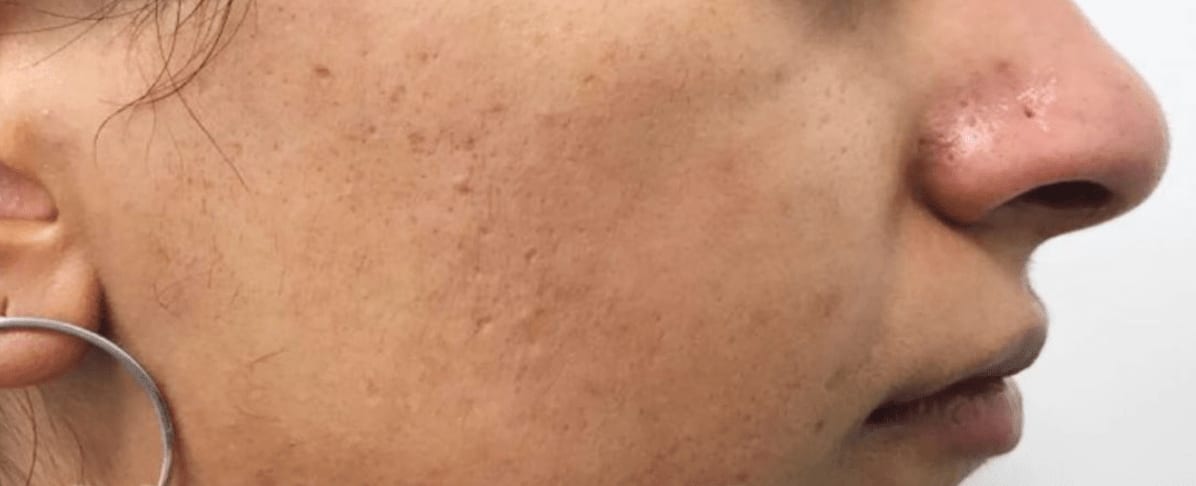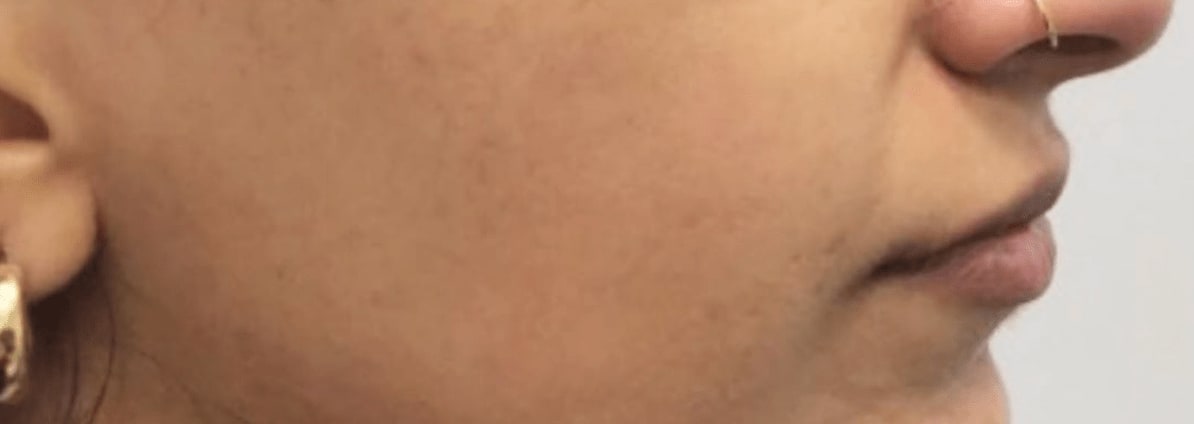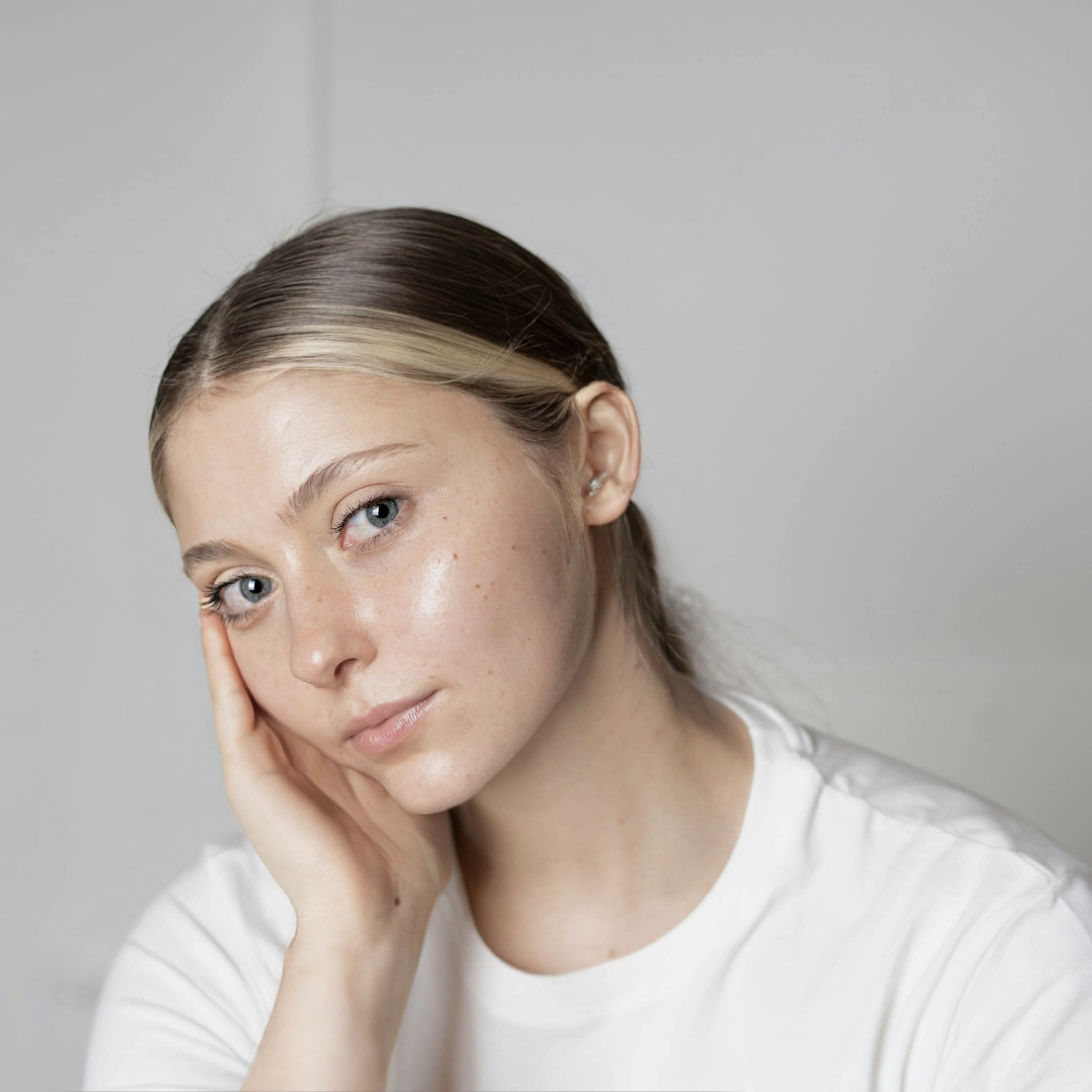
The Skinny
Microneedling is a noninvasive procedure that utilizes microneedles to address minor skin concerns such as skin laxity, fine lines, wrinkles, scarring, acne scarring, stretch marks, and skin discolorations.
It creates a more youthful, refreshed complexion by making tiny punctures, or micro-injuries, in the skin that stimulates the body’s natural healing properties to begin generating an increased amount of collagen and elastin.
The release of these properties aid in repairing the texture and resiliency of the skin. A microneedling treatment may also be referred to as “percutaneous collagen induction” or “collagen induction therapy” for its reliance on new collagen production.
Several methods expound upon this technology, varying the procedure types, and giving you a greater selection of procedures that can best meet your specific skin concerns.
AEDIT
Before & After Images by Provider












Before & After Images by Provider
Microneedling Treatment Solutions
The Specifics
Overview
Microneedling + PRP (Platelet-Rich Plasma) utilizes a combination of microneedling and a platelet concentration derived from the patient’s blood.
This type of microneedling may also be referred to as a “vampire facial” or “collagen induction therapy”. Microneedling + RF (Radiofrequency) focuses on encouraging collagen growth and tissue tightening via heat energy.
While there are many combinations of Microneedling + Serum Therapies available, this article specifically discusses a popular variation that incorporates Stem Cell Growth Factor Serum. A Microneedling + PRP + Stem Cells procedure follows a similar format as Microneedling + PRP but adds the step of applying Stem Cell Growth Factor Serum on top of the treated skin.
Each of the procedures is performed using a microneedling device that either rolls across the skin or utilizes a pen-like system to create the micro-injuries necessary for stimulating new collagen production.
A DermaRoller®, or similar rolling treatment device, is equipped with several microneedles that are approximately 0.1-0.25mm in diameter. This device gently rolls over the area being treated and penetrates approximately 2mm deep into the outer layers of the skin (epidermis).
A DermaPen® is a pen-like device in which the microneedles are positioned on the tip of the device and the micro-injuries are delivered in a pinprick fashion. The needles of this device and all microneedling device variations are also approximately 0.1-0.25 in diameter.
The micro injuries left behind from each device variation lead to a release of growth factors, trigger the wound healing cascade and aid in mechanically breaking down scar tissue. The neovascularization (development of new blood cells) and neocollagenesis (production of new collagen) result in aesthetically pleasing results without significant recovery time, as the epidermis is not destroyed by this process.
With the popularity of microneedling on the rise, more and more companies have been releasing at-home devices. You should use extreme caution in this approach as improper use could lead to damaging results. Unlike professional microneedling devices, at-home variations are much less invasive, utilize smaller needles and will leave you with less noticeable results. Because the devices are less invasive, at-home users may try to use a more aggressive approach and cause damage in the areas they are trying to treat.
For example, you might press too hard, resulting in blood draw and potential scarring. Also, unless you are hypervigilant about sterilizing your at-home device, you might inadvertently use an unsanitary device and transmit harmful bacteria into the areas you are attempting to treat.
If you do choose to look into an at-home microneedling device, make sure that you have done your homework on the devices available. You will want to purchase a high-quality device that repeatedly receives good reviews.
Before making any purchases, though, it is highly recommended that you consult with a professional medical provider who can advise you the best approach for your specific and unique skin. Despite the growing number of treatments available, you only have one skin in your lifetime, and it is always better to protect it than risk injury.
Cost & Recovery Overview
One of the biggest factors concerning cost usually revolves around the provider you choose to perform your procedure. Microneedling offers you the ability to choose from several different, highly-trained medical professionals, meaning that you have greater say in the total cost of your treatments.
Although it varies from state-to-state, microneedling can be performed by plastic surgeons, dermatologists, nurse practitioners (NPs), and in some states, aestheticians who operate under the supervision of a physician. This list is not necessarily all-encompassing, however, the providers in your geographical location will be able to give you the most accurate information according to your specific state laws.
Microneedling procedures use topical anesthesia and cost anywhere from $100-$1,100 per session with minimum recovery lasting 1 day to 1 week, making it is a powerful way to achieve skin cell rejuvenation with minimal downtime. The results of a microneedling procedure are long-lasting and can continue for up to 5 years, however, they are not permanent.
Maintenance treatments are typically necessary about once a month. You should be prepared to experience minor redness, shedding (peeling), and dry skin associated with your microneedling treatment. These are all a normal part of the skin’s healing process and will resolve quickly.
Before & After Overview
Before your microneedling session, you will need to avoid anything that exacerbates the issue of dry skin. This includes medication such as Accutane®, which will need to be avoided for 6 months before your microneedling procedure, and any topical drying agents (retinol, benzoyl peroxide 3, etc.). You will also want to avoid any laser procedures or anything that removes hair from the treatment area, including shaving, for 5-7 days before treatment.
You are unable to have active cold sores at the time of your treatment and will most likely need to reschedule your session after the sore heals and your provider has prescribed an antiviral medication to combat any further flare-ups in the treatment area. Sunburns, excessively sensitive skin, and dermatitis are not compatible with microneedling as they will affect the quality of the procedure.
Inflammatory rosacea is also not compatible as skin types with this condition may not be able to tolerate the microneedling procedure. For any of these concerns, you will want to let your provider check your skin to determine the best course of action.
Would I be an Ideal Candidate?
Microneedling is ideal for those wishing to improve the appearance of superficial acne scars, minor burn scars, and other post-traumatic scars, or for those wanting to improve minor skin imperfections including fine lines, wrinkles, skin laxity, scarring or uneven skin tone/texture. It is safe for most skin types and tones and, unlike other skin rejuvenation techniques, is safe and effective for darker skin types as well.
This technique is not recommended for those who have used Accutane® within 6 months, have open wounds or skin infections in the area, have had radiation treatment within 1 year, or for those who are pregnant, breastfeeding, or have a history of keloid scars. It is also not recommended for those with extremely sensitive skin.
Microneedling Procedure Types and Benefits
The goal of a microneedling procedure is to target minor imperfections of the skin with tiny pinpricks made by fine, microneedles that create micro-injuries in the skin and trigger the release of growth factors, activating the wound healing process.
This cycle stimulates the production of new collagen and elastin, your skin’s skin healing properties, which work to create younger looking, tightened, more rejuvenated skin. Through a rolling (DermaRoller®) or pen-like (DermaPen®) device, a provider can use the microneedling technique by itself or combine it with platelet-rich plasma, radiofrequency, stem cells or other serums specifically designed to enhance your results. The specific procedure types are outlined below:
Microneedling ($100-$550 per session) Microneedling utilizes microneedles that are approximately 0.1-0.25 in diameter to create micro-injuries in the outer layer of your skin (epidermis). These micro-injuries initiate the body’s natural healing properties to repair the micro-injuries, resulting in visible improvements in the texture and resiliency of your skin. Y
ou will sometimes hear this procedure referred to as “collagen induction therapy” or “percutaneous collagen induction” due to its reliance on new collagen to deliver results.
The entire process lasts about 20-45 minutes and only requires the use of a topical anesthetic, applied after your skin has been thoroughly cleansed. Although it can be done on its own, microneedling is now often combined with other therapeutic medications or serums to further enhance your results.
Microneedling + PRP ($350-$1,100 per session) This type of procedure combines microneedling with platelet-rich plasma (PRP) and is sometimes referred to as a “vampire facial” or as “collagen induction therapy”. PRP, platelet-rich plasma, is a formula derived from your blood.
Your provider or a medical assistant will withdraw a vial of between 5-15ml of blood from a vein in your arm that is placed into a centrifuge, where the formula is created in about 15 minutes. The centrifuge spins to isolate the platelets and activate the release of growth factors that stimulate healing in your tissues.
While waiting for your PRP formula to be created, a practitioner will use either the rolling or pinprick technique to penetrate about 2mm deep into the dermis of the treatment area. Performing the microneedling before applying the PRP prepares your skin to absorb the serum.
It is normal to experience some tightness after your treatment, but this will quickly resolve as your skin adjusts and rebuilds. Activating the build-up of collagen in this way quickly improves fine lines, skin texture and scars, allowing you to experience softer skin and immediately noticeable results.
Microneedling + RF ($250-$1,000 per session) This microneedling procedure adds radiofrequency to the microneedling process through the use of a flow needle technology which allows radiofrequency energy to reach multiple layers below the skin’s surface during the time the microneedling device is moving across your skin. This heat energy reaches into the dermis, the second layer of your skin that houses collagen, which is effective in stimulating the body’s natural healing processes.
Microneedling + PRP + Stem Cells ($600-$700 per session) Microneedling with platelet-rich plasma and stem cells is a powerful way of targeting minor skin concerns such as pore reduction, scars, acne, mild wrinkles and skin discoloration (hyperpigmentation and melasma). Like microneedling + PRP, your microneedling + PRP + stem cells session will utilize a platelet-rich plasma created from your blood.
After an initial blood draw, your blood sample will be siphoned through a centrifuge to create a growth factor stimulating formula. Once the treatment area has been numbed, your provider will pass a microneedling pen over the skin to create microchannels over which the PRP will be applied. The final step will be the application of Stem Cell Growth Factor Serum, which will take place after the microneedling and PRP are complete. Both the PRP and the Stem Cell Growth Factor Serum are clear and should stay on the skin for the remainder of the day.
The Takeaway
Before and After Care
Before your microneedling session, you will want to take care to avoid over drying your skin and may need to refrain from using skin care products that might be a part of your routine, such as topical drying agents. These include such things as exfoliants, topical antibiotics, retinoids, benzoyl peroxide, and hydroquinone and should be avoided beginning 3 days before your procedure.
You will also need to avoid taking Accutane for at least 6 months before your microneedling appointment and notify your provider if you have a history of cold sores as you will need to begin taking an antiviral agent 2 days before treatment to avoid any potential flare-ups. You are not able to have a microneedling procedure with active cold sores, warts, sunburns, excessively sensitive skin, dermatitis or inflammatory rosacea within the application area.
The day after your microneedling treatment, you can resume cleansing your face and can apply lotions, topical products, and makeup as usual, although you will want to refrain from exfoliants or glycolic acids as these excessively dry out the skin. You will notice skin dryness, flaking, and shedding for 2-7 days following your procedure. This is normal and is due to an increased turnover of skin cells. You may still apply your regular skin moisturizer, though, and will begin noticing smoother, more radiant skin within a week after the procedure.
The only variance from these instructions is for those who have had a microneedling + PRP. For microneedling + PRP, you will need to avoid washing your face for 5-24 hours post-treatment. After that period, you will need to wash the treatment area with tepid water as this will remove all serums and dried blood.
Also, refrain from using sunscreen or makeup for 12 hours. After the initial 48-72 hours, you can resume your regular skin care regimen. Retinol products are strongly suggested to use for optimal results but avoid alcohol-based toners for 10-14 days and refrain from any excessive sun exposure for 10 days.


